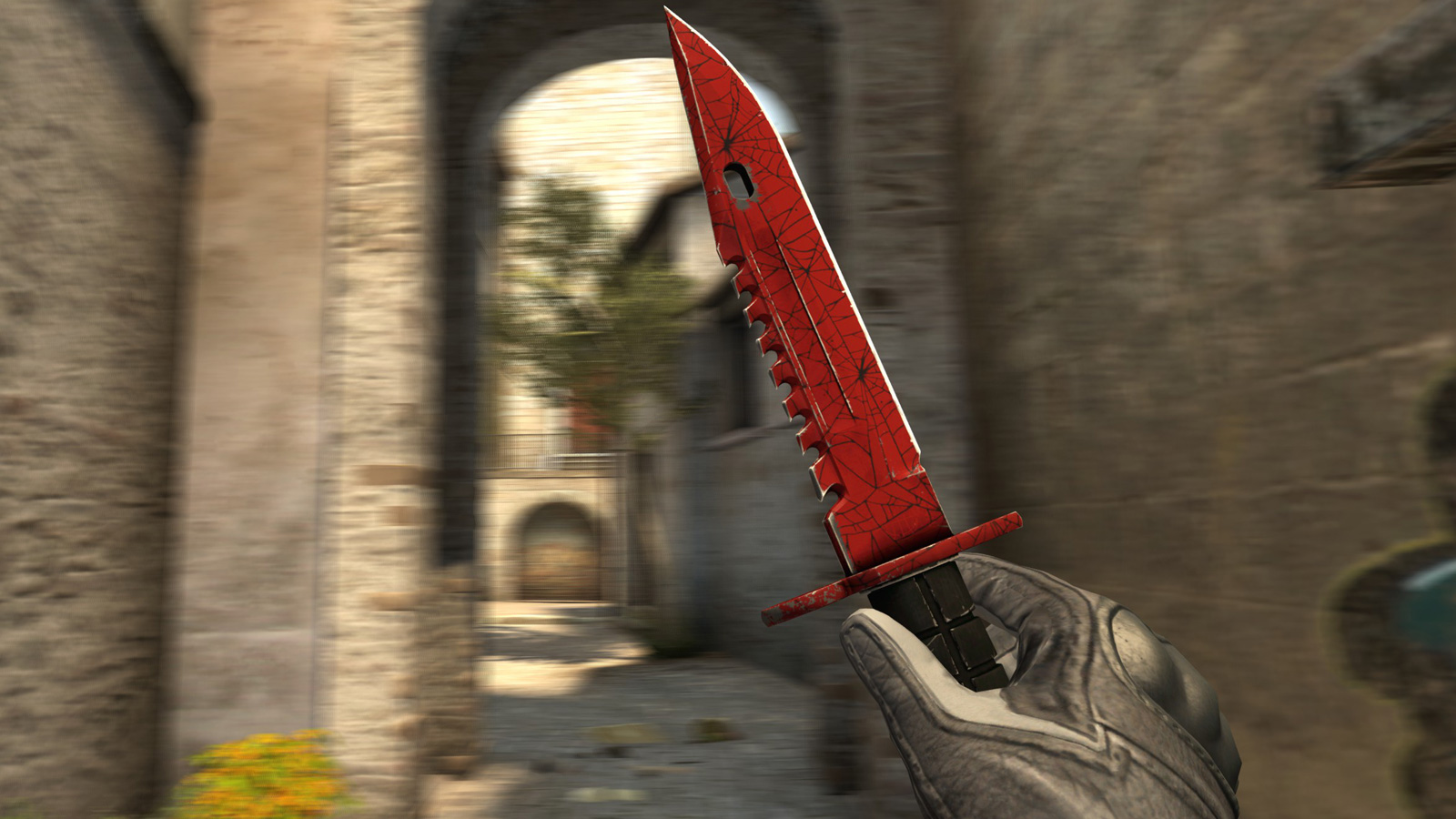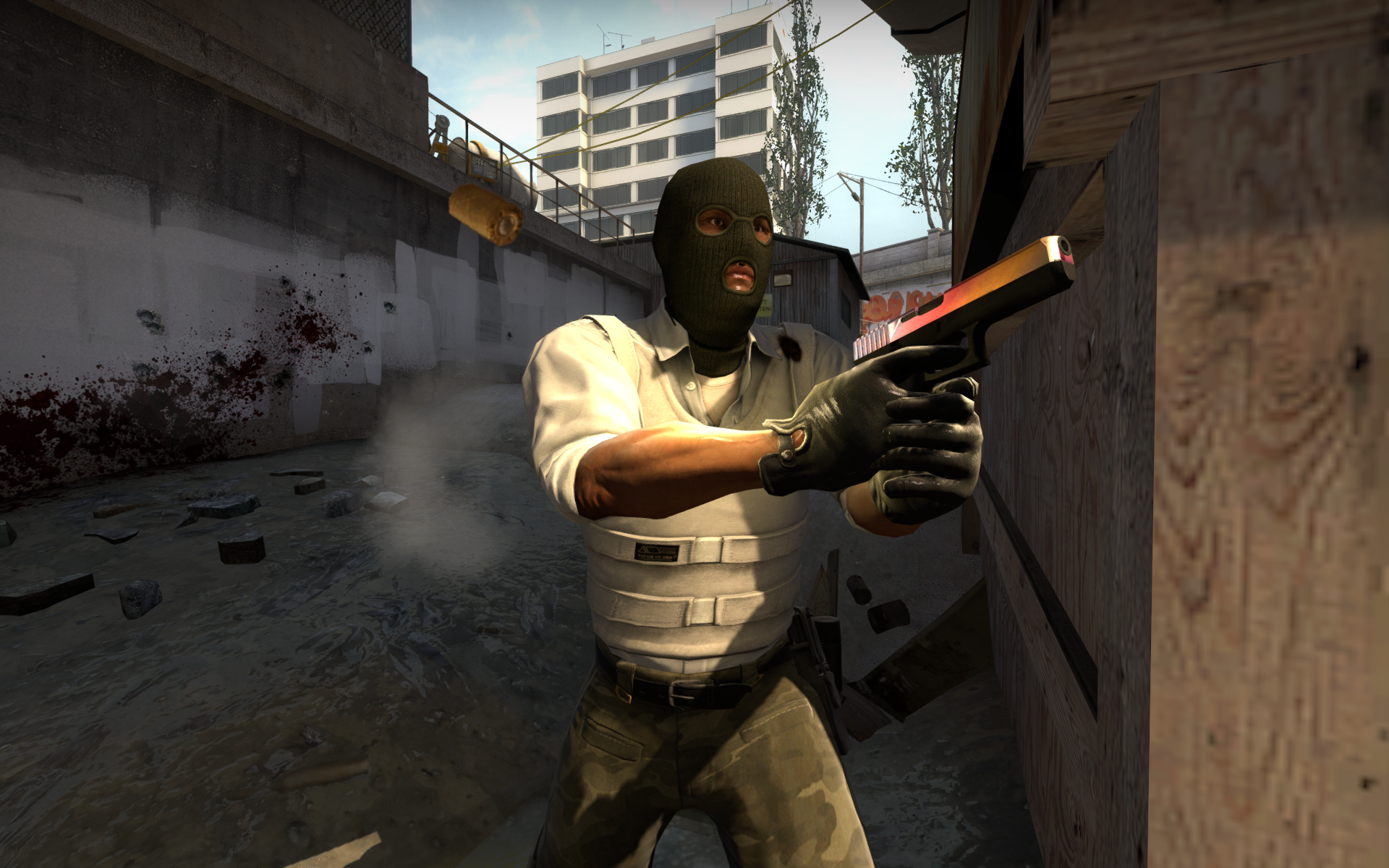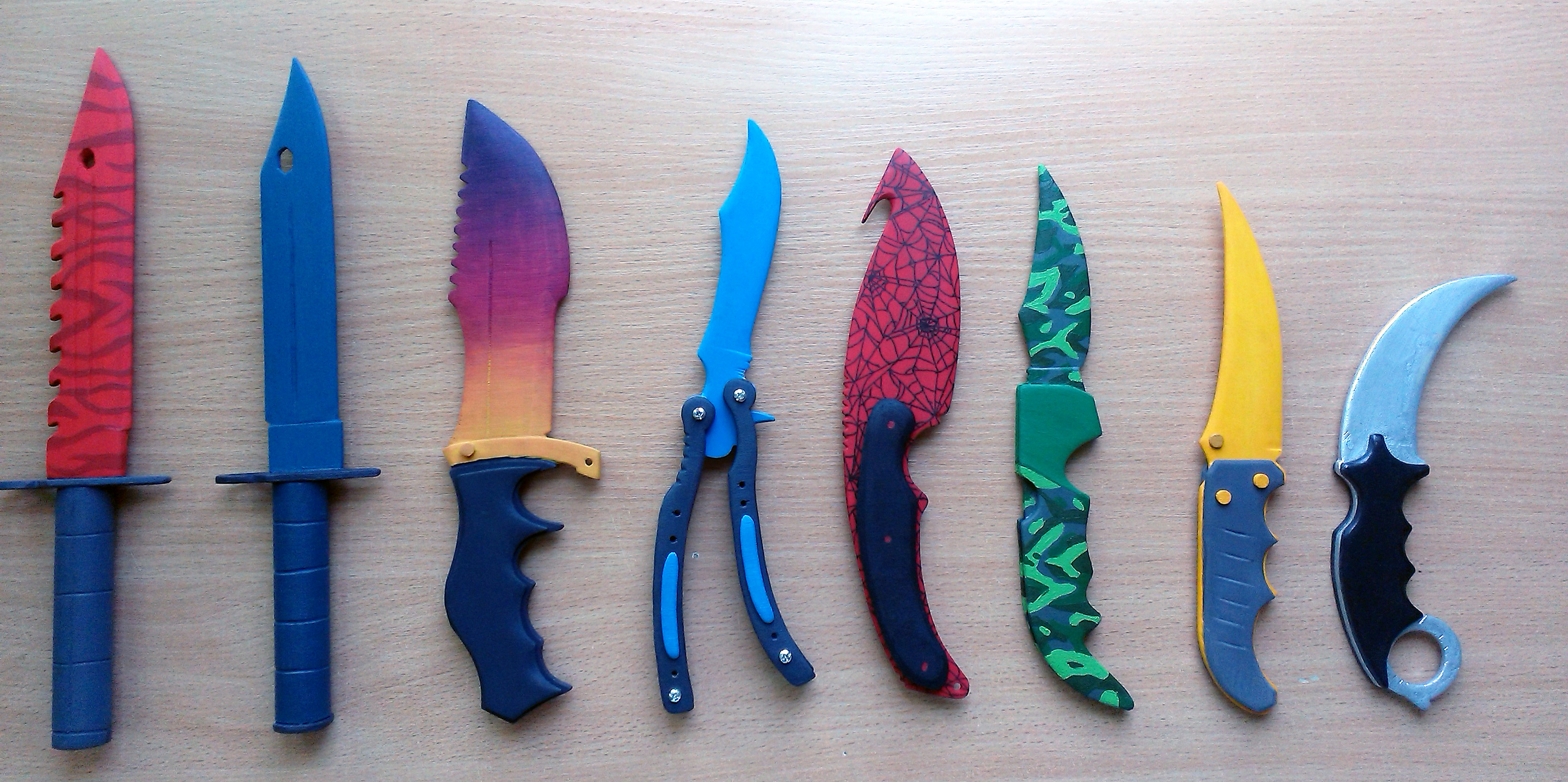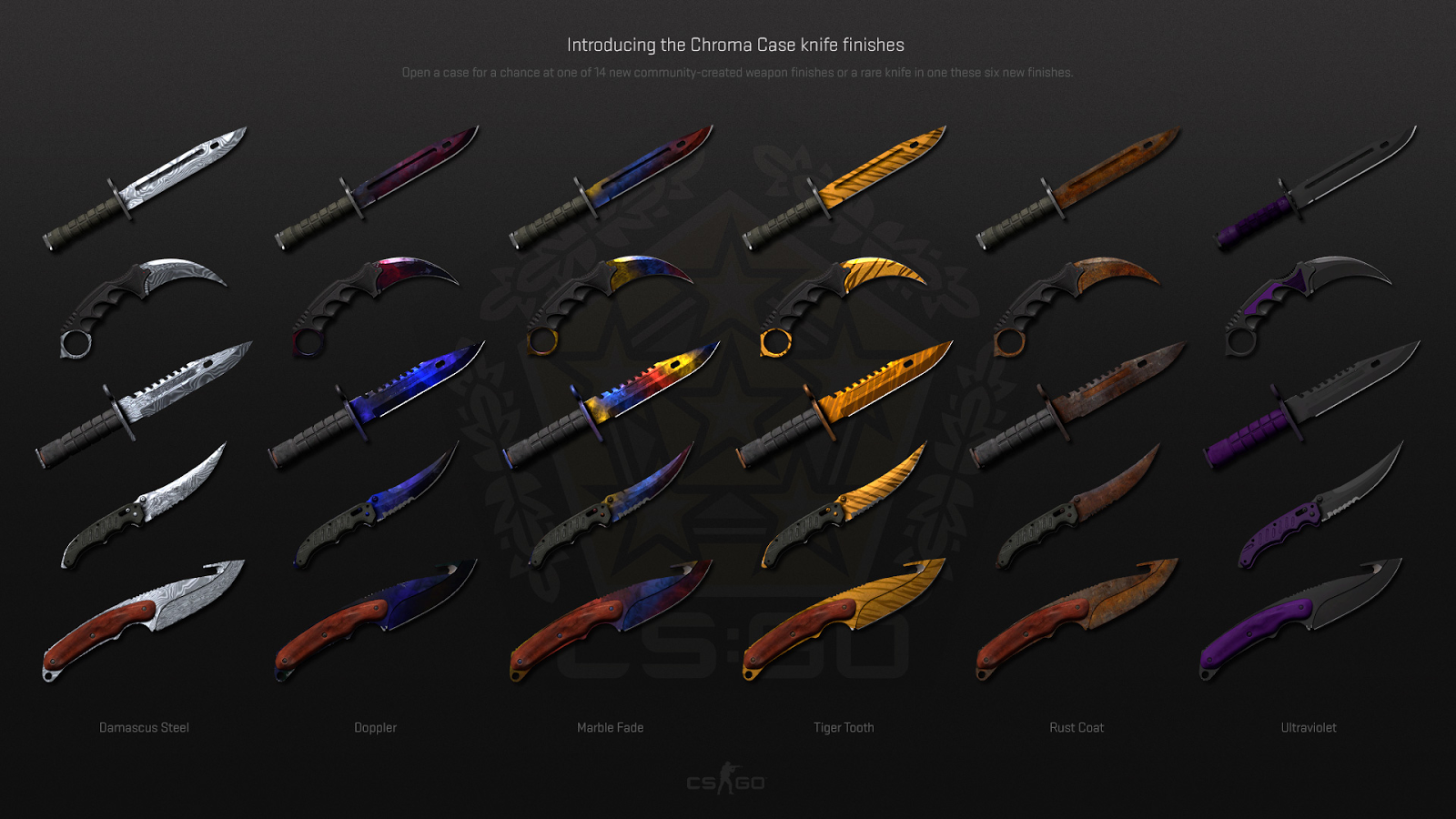How $400 virtual knives saved Counter-Strike

CS:GO’s massive popularity eclipses its bizarre history. More than 8 million people play Counter-Strike every month. The average number of people playing CS:GO in August (357,535) was an incredible 14 times greater than it was two years ago (25,961). Even Team Fortress 2, at the peak of its popularity, drew less than one-fifth of the concurrent players that CS:GO does today.
But if you crane your neck around the massive conga line of people who have discovered Global Offensive, you’ll remember that, oh right, it was born as a port—partly meant to put Counter-Strike onto the previous generation of consoles before the end of their lifespan. When Valve and Hidden Path brought CS:GO to PAX in 2011 they demoed it exclusively on Xbox 360 and talked up, no joke, cross-platform play between PC and PS3 as a major feature (which was cut before release).
In 2012 it wasn’t especially clear that Valve, who did not reply to a request for comment for this story, intended to dedicate significant resources to Global Offensive post-launch (memes about the seemingly modest size of Valve’s CS:GO team were still being kicked around six months ago). Most of the production of CS:GO was done by Hidden Path, also known for the Defense Grid series, who had about 30 people working on it before release. “Valve's involvement grew continually during the final pre-launch phase,” as Hidden Path CEO Jeff Pobst told me.

When I reached out to Hidden Path to talk about CS:GO’s origins, Pobst shed light on an the biggest challenge that CS:GO faced before release: how to unify the deeply entrenched Source and CS 1.6 communities under a single game. “Initially we started working with the Valve folks to bring CS:S to console. The project grew over time to become something much larger because the folks at Valve were really interested in exploring if there was anything that could be done to try to bring together the two existing groups of CS players,” said Pobst.
Hidden Path and Valve faced a daunting task: making everyone happy. Appeasing not one, but two communities who are resistant to change is difficult enough without also having to woo people who didn’t grow up on Counter-Strike. “There were players who felt that CS 1.6 was a superior experience for their play style and there were other players who felt like CS:S was the best game for their play style,” says Pobst. “Sadly those two groups were very segmented and didn’t play together. We started having a lot of discussions with Valve about what a product might look like—if it was even possible—that would become the favorite version of Counter-Strike for both existing player groups as well as for new players. And that was the main design focus behind most every decision that went into the development of CS:GO.”
Fresh paint
Plenty of people did play CS:GO when it came out, but it did not show hints of becoming the sensation that it is today for some time. For a year after release, CS:GO wasn’t even the most popular version of Counter-Strike—some players were still actively debating the merits of GO against its thirteen- and nine-year-old predecessors. What changed?
Weapon skins.
The biggest gaming news, reviews and hardware deals
Keep up to date with the most important stories and the best deals, as picked by the PC Gamer team.
Almost exactly a year after release, Valve introduced Team Fortress 2-style weapon drops to CS:GO, an event that coincides with the game permanently overtaking its older siblings. This design decision put CS:GO on the trajectory to being the most popular game on Steam that isn’t Dota 2. As ex-pro Tomi ‘lurppis’ Kovanen puts it, “Without the item economy Counter-Strike would be smaller. We would likely be at a level slightly above that of late 2013, and one similar to the peak years of Counter-Strike 1.6. There would be less money, no Valve-sponsored majors, and no one-million-viewer grand finals,” says Kovanen, who contributes to PC Gamer. “In hindsight, the addition of the skins has been the most important development in CS:GO's history, bar none.”
”The addition of the skins has been the most important development in CS:GO's history.”
But why? After all, plenty of other FPSes have booster pack-like item systems or weapon customization that you don’t have to pay to unlock. How has the addition of ultra-rare knives and questionable anime guns lured so many people to Counter-Strike?
Part of the explanation lies in how elegantly these decorated guns and knives integrate with fundamental aspects of Counter-Strike despite being purely cosmetic things. Something mostly unique to Counter-Strike, for example, is how much time you spend watching others play it. Death comes easily, and once slain you’re pushed into someone else’s eye sockets, where you’re forced to gaze upon the ballistic eye candy of their painted guns.

If that wasn't enough, Valve directly incentivized the act of watching CS:GO majors in-game or through Twitch with a linked Steam account: spectators of the biggest tournaments can win special edition “Souvenir” skins. Souvenir versions of rare weapons are some of the most valuable in the game—a Souvenir Cerebus Galil, the second-tier Terrorist rifle, might fetch $230.
Likewise, picking up other players’ guns is a strategically valuable move—grabbing a dropped AWP saves your team from spending those resources from their own virtual pockets. (Any primary or secondary weapon will be automatically forced into your hands if you aren’t carrying one, even.) But after weapon skins were added, taking your opponent’s AWP or AK-47 took on a new meaning: it became a visual trophy. Spectators could see, presented in the UI, the gun owner’s name. Killing someone with their own, bedazzled rifle became the ultimate insult. Valve even added a command that plays a custom “look at my fancy weapon” animation. Checking out your gun mid-match became a kind of taunt, especially if it was an opponent’s.

Evan's a hardcore FPS enthusiast who joined PC Gamer in 2008. After an era spent publishing reviews, news, and cover features, he now oversees editorial operations for PC Gamer worldwide, including setting policy, training, and editing stories written by the wider team. His most-played FPSes are CS:GO, Team Fortress 2, Team Fortress Classic, Rainbow Six Siege, and Arma 2. His first multiplayer FPS was Quake 2, played on serial LAN in his uncle's basement, the ideal conditions for instilling a lifelong fondness for fragging. Evan also leads production of the PC Gaming Show, the annual E3 showcase event dedicated to PC gaming.


